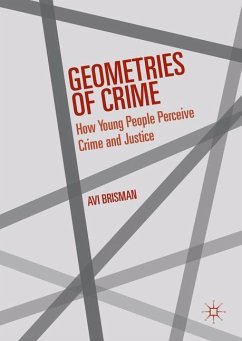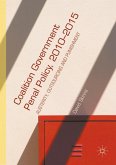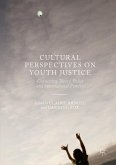This book explores how young people perceive the severity of crime and delinquency. It particularly addresses whom or what they consider to be the victims of crime and delinquency, how they analyze and assess appropriate responses by the criminal justice system, as well as their place within it. The book proposes tools for developing a more elaborate and robust understanding of what constitutes crime, identifying those affected by it, and what is deemed adequate or appropriate punishment. In so doing, it offers thick description of young peoples' conceptions of and experiences with crime, delinquency, justice and law, and uses this description to interrogate the role of the state in influencing - indeed, shaping - these perceptions.
"Brisman's work-like his title-is a complex and layered geometry of claims that in fact emerge out of his deeply reflective concerns with the very project he initiated. His work is to be read carefully, as it is in fact a very layered story of one scholar's own process of grappling with what at first attracted him as an innovation that was a step forward in terms of dismantling traditional criminal justice structures ... ." (Alexandra Cox, Critical Criminology, Vol. 25 (1), March, 2017)
"Avi Brisman's Geometries of Crime: How Young People Perceive Crime challenges the theoretical analyses of criminologists who define crime using geometric models. ... One of the strengths of this book is Brisman's focus on the criminal justice system as perceived by RHCJC youth. ... Geometries of Crime provides critical insight for academics and criminal justice practitioners considering the relevance of youths' perceptions within the criminal justice system." (James Gacek, The Annual Review of Interdisciplinary Justice Research, Vol. 6, 2017)
"Avi Brisman's Geometries of Crime: How Young People Perceive Crime challenges the theoretical analyses of criminologists who define crime using geometric models. ... One of the strengths of this book is Brisman's focus on the criminal justice system as perceived by RHCJC youth. ... Geometries of Crime provides critical insight for academics and criminal justice practitioners considering the relevance of youths' perceptions within the criminal justice system." (James Gacek, The Annual Review of Interdisciplinary Justice Research, Vol. 6, 2017)








